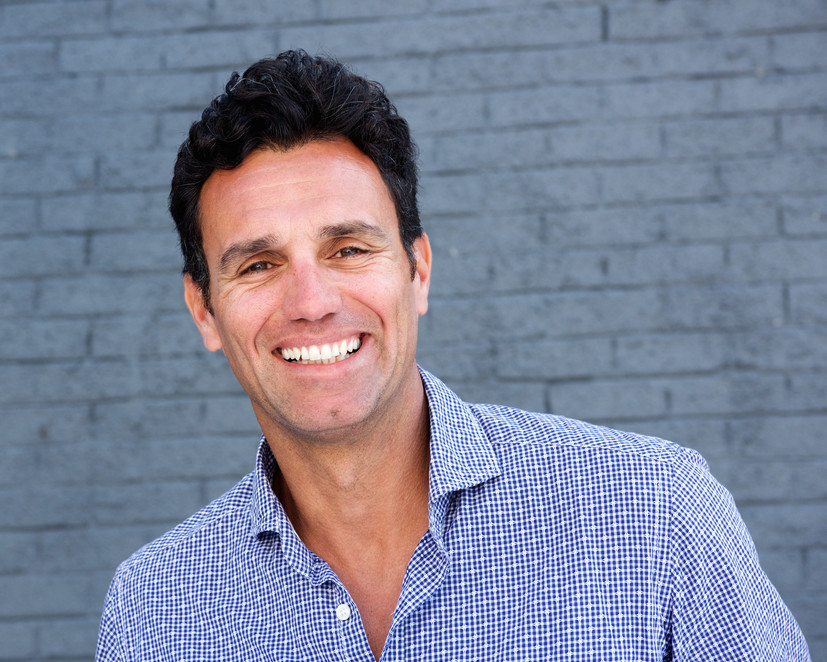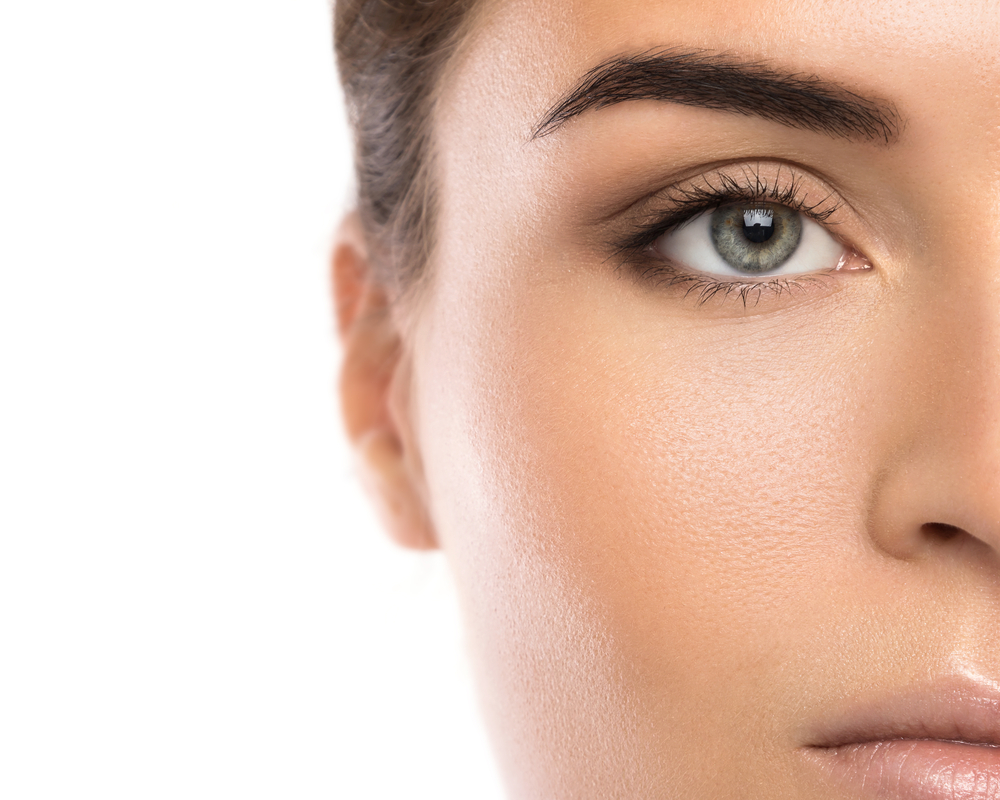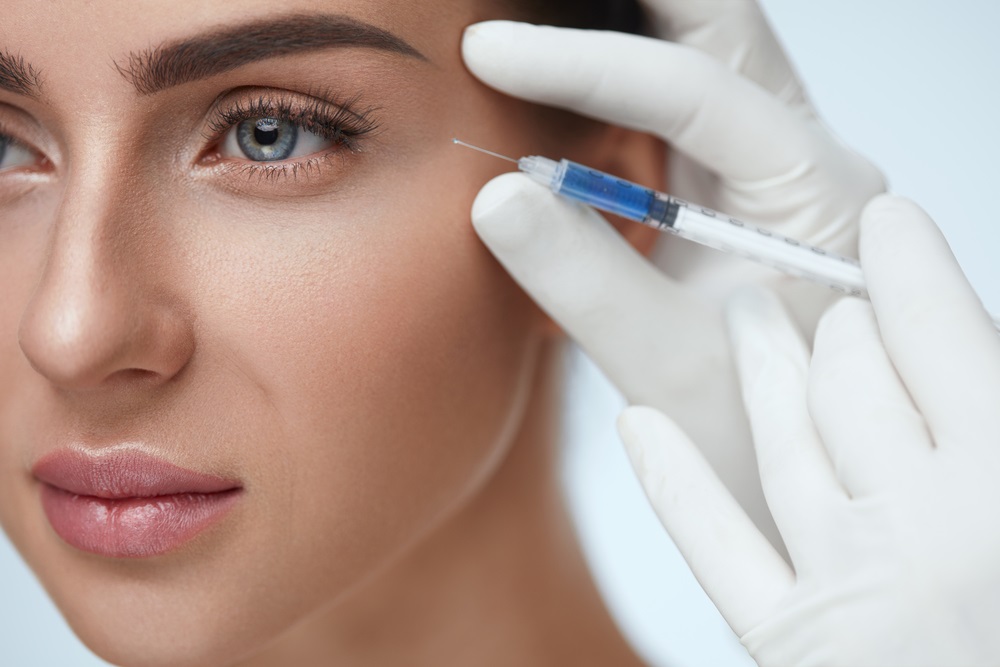Facial fillers are twice as popular among men as they were fifteen years ago. Results can be phenomenal when used in moderation, but too much filler can give you an overstuffed look, causing the cheeks and other areas of the face to puff out.
The times have changed. Whereas not so many years ago cosmetic enhancement was primarily the domain of the fairer sex, these days men want to look their best every bit as much as woman do. As Dr. David A. Schlessinger, a respected cosmetic surgeon with a practice in Woodbury, New York, points out, “Fillers in men are definitely on the rise. Because men are less likely to opt for facelifts than women, the use of dermal fillers are a great alternative to improve their appearance. And with no downtime either.”
And it’s not only older guys going for these procedures either. Many younger men choose to get soft tissue fillers before their skin takes on an aged appearance. By adding volume and plumping up the skin, it’s actually possible to delay wrinkles from forming. The right filler will stave off the development of new lines, creases, and folds, or even restore fullness to your lips.
If you’re concerned about staying competitive at work or simply want to refresh your look, dermal fillers are a minimally-invasive, almost instant solution. One of the main reasons they’re so popular is because they essentially provide immediate results, and full, final results within a few days of treatment.
Bear in mind however that men and women’s faces do not age the same way. Over-filling areas such as the cheekbones or lips can cause a “puffy” appearance and feminize facial features. It’s advised to speak with several surgeons before settling with one that you feel comfortable with and who has a proven track record of performing facial rejuvenation procedures on men.

Why do men sometimes need different dermal filler treatments than women?
It’s a biological fact that men tend to have thicker skin and larger bones than women. Consequently, men often need a thicker, more viscous dermal filler to achieve the best results.
Dr. Robert Kearney MD, FACS, a popular San Diego board-certified plastic surgeon says that “most of the male patients who come to see me are focused on their forehead and glabellar area (the area between the eyes). So for these men we use botulinum toxin first and fillers after. This gives the filler more longevity. If there are any “glaring lines” I recommend filling them or using Botox to minimize their appearance.”
New York’s Dr. Schlessinger, however, notes that where “women are more likely to use dermal fillers in their lips, marionette lines and upper cheeks, the men who come to see me are typically more concerned with lower lids and nasolabial folds. I like Restylane for the lower lids because it swells less than Juvederm and lasts longer than Belotero. I also like Radiesse for mens cheeks and nasolabial folds as it is stiffer and probably lasts longer than the hydronic acid fillers.”
What happens during a dermal filler treatment?
Dermal fillers are injected into soft tissue to temporarily restore and smoothen the skin’s appearance. It’s a fast and easy procedure. Most appointments take approximately 30 – 60 minutes from start to finish, depending on how many areas are being treated. The more areas being treated, the longer the appointment.
Step 1: The practitioner examines your skin and makes recommendations to best achieve the results you are looking for. Your doctor will suggest one or more dermal filler types and estimate how many units of filler will be needed to treat each area you want to improve.
Step 2: If desired, the practitioner applies a local anesthetic to reduce pain. Most patients report that dermal filler treatments are essentially painless.
Step 3: A dermal filler is injected into your skin with an ultra-thin needle.
Step 4: Volume is restored to the skin, plumping lines and folds.
Step 5: An ice pack is provided after the treatment to reduce any potential swelling. Your doctor may also recommend topical treatments like arnica gel for bruising, especially if the thinner skin around your eyes was treated.
No down-time is required after a dermal filler treatment. You can return to the office or enjoy a relaxing afternoon at home. If you’re a fitness enthusiast, your practitioner may recommend taking a day off from your work-out schedule after your treatment.
How soon will I see results?
You’ll see immediate results after a dermal filler treatment. That said, you may experience slight bruising or swelling for several days after. Some patients bruise more easily. Ask your doctor about any steps you can take to reduce bruising when you book your first consultation.
How long do the results last?
Although you may have read about permanent facial fillers, there have been some problems associated with their use. Most patients prefer hyaluronic acid products, which are both safe and effective.
Your body will naturally break down the dermal filler over time. When the results have started to fade, you can safely just go back and ask your doctor to inject new dermal fillers into the treatment area.
Depending on how quickly your body metabolizes dermal fillers, the results can last for less than a year or as long as 18 months. In general, men with faster metabolisms need to return for more treatments sooner than men with slower metabolic rates.
Are there any side effects?
In contrast to older collagen injections that required a skin test, today’s dermal fillers are allergy-free. Numerous studies and tests conducted across the globe have firmly proven the treatments to be safe. Nevertheless, occasionally some patients experience one or more side effects including:
- Swelling, redness, or bruising at the injection site
- Skin infections. While extremely rare it’s also not impossible.
San Diego’s Dr. Kearney mentions that “while very rare there have been reports of fillers causing blocked blood vessels. But this can be treated with dissolution of the filler and other possible maneuvers to minimize damage to the skin at risk. I do not routinely mention this to patients as I have never had personal experience with this type of complication in the 18 years I’ve been injecting fillers.”
Woodbury, New York’s Dr. Schlessinger expands on some of the safety issues. “In general fillers are very safe when injected by the proper individual. However, people need to realize that fillers are implants and they stay in the body for a while. Therefore, it is important that the injector uses sterile techniques. One of my patients told me that a previous injector shared a vial between her and her friend. This is not a safe practice because even if you change the needle, there is potential to spread diseases between patients. As a surgeon, I always use sterile technique and completely disinfect the area being injected. I also use cannulas and have an intimate knowledge of the anatomy to lower the risk of injecting into an artery, which can cause loss of blood flow to the area.”
Dr. Schlessinger further cautions that, “when being injected with a dermal filler, the patient should always see the surgeon using a brand new syringe and the injector opening up a new box. There have been cases of people using products that are not FDA approved. I would also avoid being injected in salons or people’s homes. It is difficult to keep a clean and safe environment outside of an MD’s office. And of course, always make sure you know who is treating you and make sure they have a valid medical license. There are way too many cases of people with no medical training injecting un-safe products that are not approved for medical use in this country.”
Will my face look natural after a dermal filler treatment?
Yes. As long as you don’t overdo it, a treatment will make everyone notice you look great, but no one will know you’ve had a cosmetic procedure. One of the main reasons dermal fillers are so popular is because they provide such natural-looking results.
What does a treatment cost?
In general prices vary depending on a range of factors, including the type of filler used, the location of your practitioner (it will likely cost you more in Beverly Hills than West Virginia), the duration of the procedure, and the expertise of your provider.
Dr. Schlessinger says that when it comes to the matter of price “Sculptra and Radiesse last longer than hyaluronic acid fillers. However, these products can’t be used everywhere on the face. So in terms of hyaluronic acid fillers, I think Restylane Lyft lasts longer and costs less than Voluma, so it’s a relative bargain. Belotero is a less expensive alternative to Restylane Silk for fine lines around the mouth.
Restylane and Juvederm fillers cost anywhere from $500 to $1300 per 1ml syringe. Belotero injections average $500 per syringe. The cost of each client’s treatment is tallied according to how many dermal filler product units are used.
Book a no-cost consultation appointment to discuss the full range of dermal filler treatment options and ask for a treatment estimate at that time.









